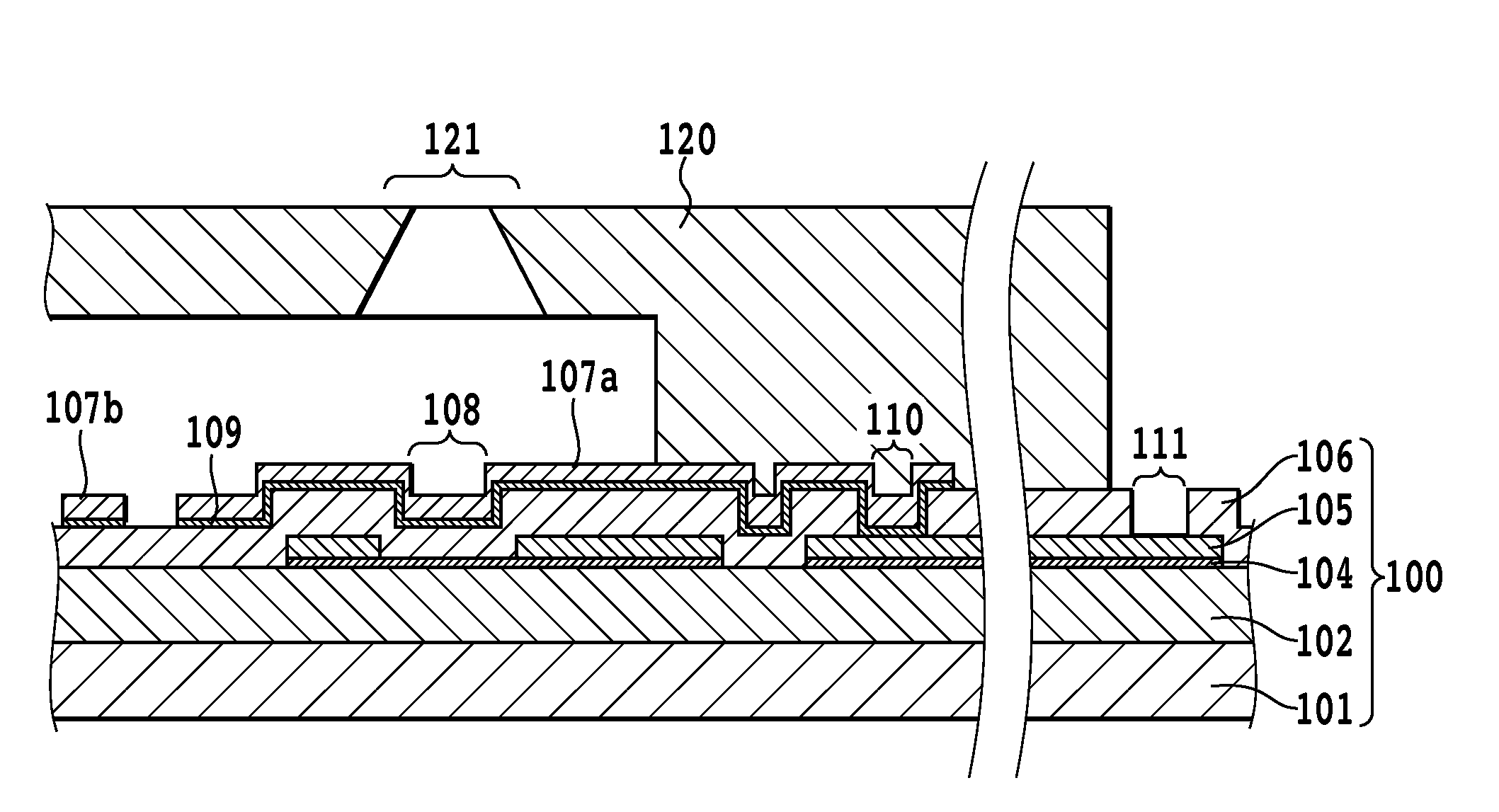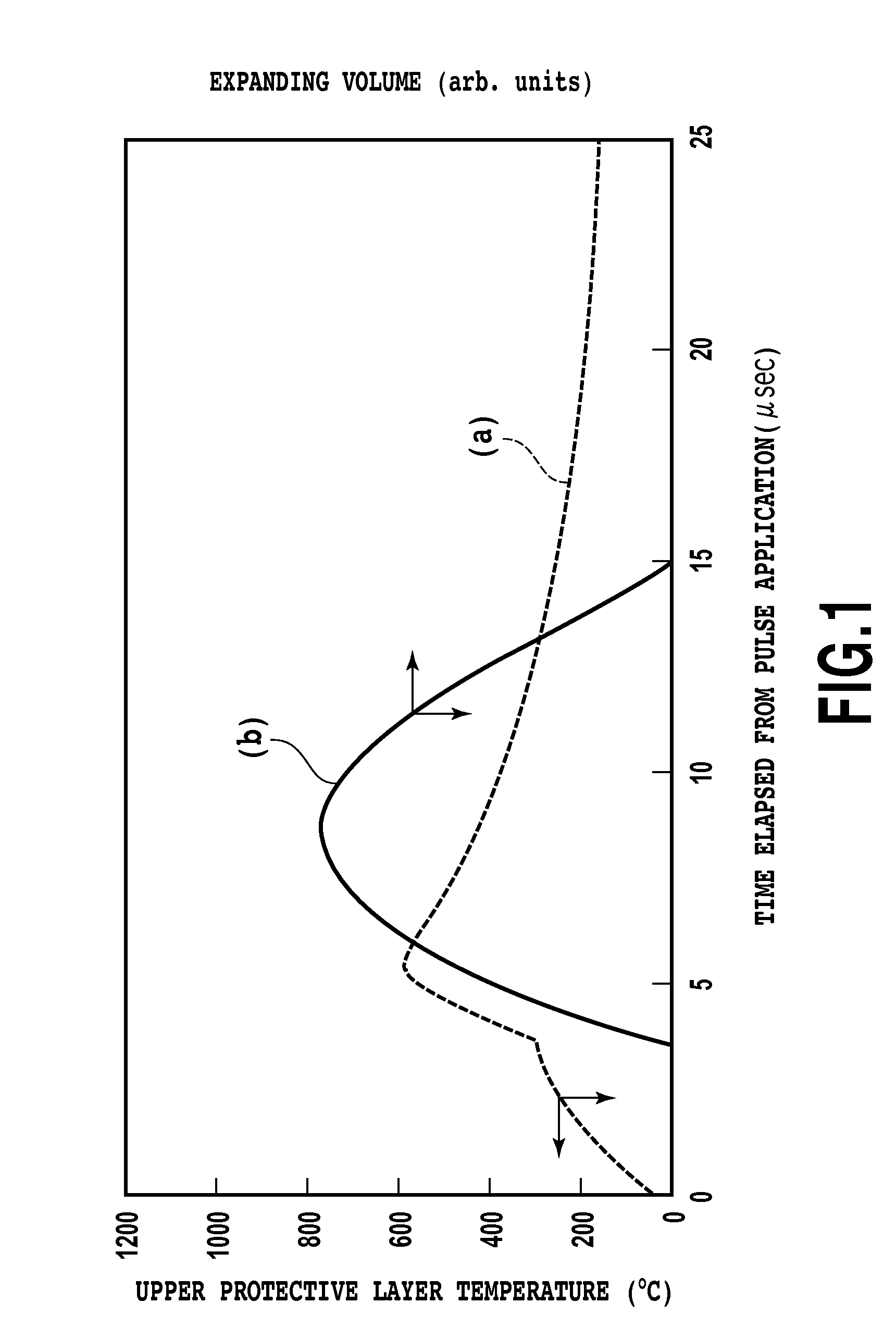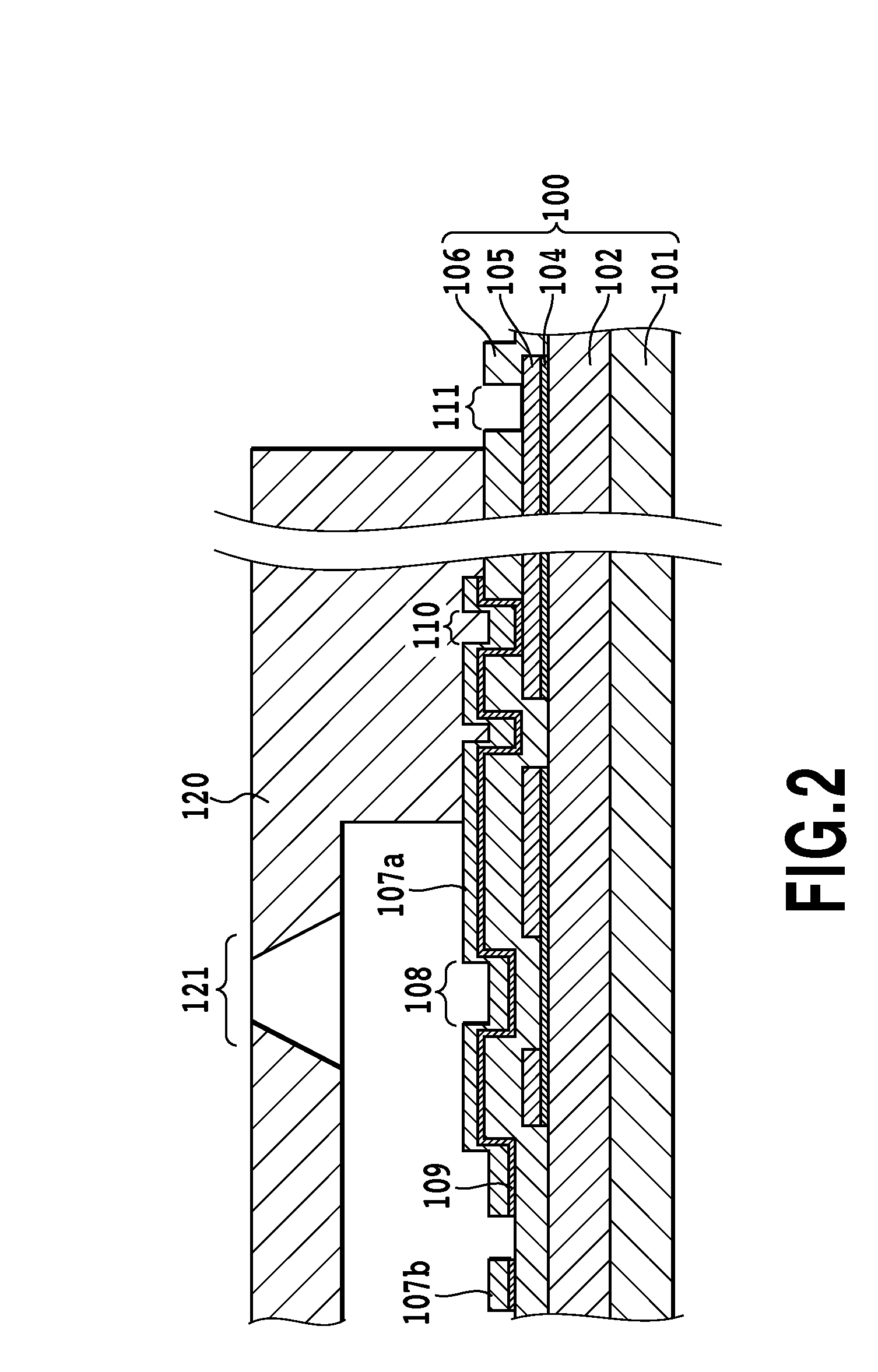Liquid ejection head
a liquid ejection head and ejection head technology, applied in the direction of printing, inking apparatus, etc., can solve the problems of inability to produce bubbles, unstable bubble generation, uneven heat transfer from the heating resistor to the ink, etc., to achieve the effect of removing cogation matters and improving adhesion
- Summary
- Abstract
- Description
- Claims
- Application Information
AI Technical Summary
Benefits of technology
Problems solved by technology
Method used
Image
Examples
Embodiment Construction
)
[0029]Hereafter, a detailed description of embodiments of the present invention will be given referring to the drawings.
[0030]FIG. 2 is a schematic partial sectional view showing an ink jet head to which a configuration of the present invention is applied. Also, FIG. 3 is a schematic plan view of the vicinity of a heat application portion in an ink jet head substrate according to the embodiment of the invention. FIG. 2 is a sectional view showing a state of the substrate that is cut vertically along a line II-II in FIG. 3.
[0031]In FIGS. 2 and 3, a reference numeral 101 denotes a silicon substrate. A reference numeral 102 denotes a thermal storage layer which can be formed of a thermally oxidized film, a silicon monoxide (SiO) film, a silicon nitride (SiN) film, or the like. A reference numeral 104 denotes an heating resistor layer, and a reference numeral 105 denotes an electrode wiring layer, which acts as wiring and is formed of a metal material such as aluminum, aluminum-silicon...
PUM
 Login to View More
Login to View More Abstract
Description
Claims
Application Information
 Login to View More
Login to View More - R&D
- Intellectual Property
- Life Sciences
- Materials
- Tech Scout
- Unparalleled Data Quality
- Higher Quality Content
- 60% Fewer Hallucinations
Browse by: Latest US Patents, China's latest patents, Technical Efficacy Thesaurus, Application Domain, Technology Topic, Popular Technical Reports.
© 2025 PatSnap. All rights reserved.Legal|Privacy policy|Modern Slavery Act Transparency Statement|Sitemap|About US| Contact US: help@patsnap.com



